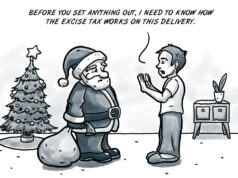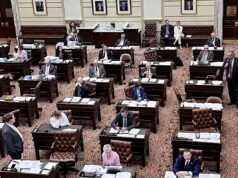
If you listen to most of Oklahoma’s elected officials and journalists attempt to explain supply-side economic theory, you’ll come away with a very poor understanding of this important and influential economic perspective. Given the amount of discussion on the merits or demerits of this approach to economics in regard to the state’s current budgetary struggles and prospects for economic growth, it’s time to provide a basic primer on supply-side economics. Then we can determine where its supporters and opponents veer off in their understanding or description of it.
Production, not consumption, drives economic growth
Supply-side theory rests on some pretty basic economic assumptions. Its most important assumption is that production drives economic activity, not consumption. As noted economic historian Deidre McCloskey has explained, “production for consumption” is the key to economic growth. The supply of goods and services determines growth of the economy. This is in direct contrast to Keynesian economic theory, which postulates that it is demand – people consuming things – that is the primary driver of economic growth. This might sound like a chicken-and-the-egg argument. Don’t you need supply and demand for economic activity? Certainly. But which drives which? More importantly, in times of economic downturn, which should be emphasized for returning to economic growth?
Keynesians argue demand is king. When faced with a recessionary period, Keynesians prescribe increasing government spending (stimulus spending) and lowering taxes (this always seems to be forgotten by many left-leaning politicians). Then, you balance out the growth by increasing taxes and reducing government spending during periods of rapid economic growth.
Supply-side theory, on the other hand, argues that production is the key. Production requires employment. Employment provides cash to spend. Spending follows production. Supply-side theory argues that creating a climate conducive to production is the best approach to avoiding the most damaging effects of recessionary periods.
Too much of a good thing
A second assumption of supply-side theory is that the law of diminishing marginal utility applies even to tax rates. If you’re not familiar with this concept, perhaps you’ll recognize its more common expression that it’s possible to have too much of a good thing. The Laffer Curve, merely a graphic illustration of this basic principle, gives supply-side theory its intellectual force. It demonstrates what should not be overly controversial: a) Tax rates that are too low will result in a net loss by costing more in government revenue than is gained by increased economic growth (a point all too-often forgotten by those on the right); and, b) Tax rates that are too high will also result in a net loss by costing more in lost economic growth than is gained in increased government revenue (something those on the left would do well to remember).
Break down the barriers
The third important assumption of supply-side theory is that if you reduce the barriers to employment and entrepreneurship you will get more of both. This is a pretty straight-forward assumption. The primary barriers to these are taxes and government regulations, however, similar to tax rates, some level of regulation may, in fact, be beneficial to economic growth — or at least not significantly harmful to it.
Caught in a loop of uninformed opinions
When we examine these concepts in light of current budget debates at the State Capitol we quickly learn that relatively few elected officials or journalists understand supply-side theory well enough to advocate for or against it. Supply-side theory cannot support the idea, as some Republicans seem to believe, that continuous cuts in the state’s income tax will provide a significant boost to economic growth. It seems clear that we have reached the point in the Laffer Curve where additional cuts in the income tax will cost us more in benefits from additional government revenue (transportation infrastructure, education, law enforcement, and foster care services, etc.) than can be gained through the resulting economic growth.
Conversely, Democrats can’t look at taxes as a substitute for the market activity that actually generates economic growth. A paper authored by Christina Romer (former chair of the Council of Economic Advisors under President Obama) and her husband David Romer in the American Economic Review demonstrates the basic supply-side supposition that tax increases have a negative impact on economic growth. Their study reveals that a tax increase equal to 1 percent of gross domestic product (GDP) will produce a reduction in real GDP of between 2.5 and 3 percent. Clearly, the back side of the Laffer Curve is real.
Until there’s a better understanding of this economic theory, we’ll continue to be caught in a loop of relatively uninformed opinions, with all sides offering simplistic euphemisms for a complex system of economic thought. This loop will reduce our ability to make sound public policy decisions that ensure economic growth while adequately providing the resources needed to fund necessary government services.




















